The "Southern Cross" over the South Pacific: Kingsford-Smith's Fokker F.VII can tell a truly exciting story!
The Fokker F.VII "Trimotor" was undoubtedly one of the great designs in the history of aviation. Its design reflected the optimistic spirit of the up-and-coming aviation of the early 1920s, just as the success story or stories of the F.VII in turn characterised this era - after all, the Fokker F.VII "Trimotor" was indeed a success!
About the Fokker F.VII 3m
Exact production figures can no longer be reconstructed, but at least 290 examples were produced by Fokker by the "N.V. Nederlandsche Vliegtuigenfabriek Fokker" - an outsourcing of aircraft production to the Netherlands, which was caused by the provisions of the Versailles Treaties. This figure also includes those aircraft that were produced for the American market under licence by the "Atlantic Aircraft Corporation" as the Atlantic C-2.
The modern-looking shapes almost make you forget that the design of this 10-seater passenger aircraft had already begun in 1923. The first flight took place on 11 April 1924. Built in several versions, the F.VII soon dominated passenger and cargo aviation in the 1920s. Its good reputation and worldwide distribution were so outstanding that it was not until the mid-1930s that types such as the Boeing 247 and, above all, the DC-2/3 series were able to overtake it.
The performance of the Fokker F.VIIb 3m Trimotor shown here is impressive: with a length of 14.35 metres and a wingspan of 19.30 metres, it weighed a maximum of 3650 kg when loaded. Three 223 hp Wright J-5 Whirlwind 9-cylinder radial engines allowed a top speed of 185km/h, the range of the F.VIIb 3m is given as 1160 kilometres.
Just how much the Fokker Trimotor was appreciated was also revealed by the fact that it became the favourite aircraft of numerous aviation pioneers and long-distance pilots. It became famous for the polar flights of Hubert Wilkins, and even more so for the popular attempt by the American Richard Evelyn Byrd to fly over the North Pole in 1926. One of the last great deeds of the Fokker F.VII was its use in the first successful overflight of Kilimanjaro, carried out by Walter Mittelholzer. The sensational flight took place in January 1930.
About the Fokker F.VII "Southern Cross"
Among the many pioneering flights, however, one company and the Fokker F.VII used in it stands out in a special way: the aircraft shown here in the model is the "Southern Cross", with which the crew Charles Kingsford-Smith, Charles Ulm and Harry Lyon as navigator and the radio operator James Warner completed the first crossing of the Pacific.
The flight started on 31 May 1928 in Oakland, California, and ended on 9 June in Brisbane, Australia, after 11,585 kilometres. Interestingly, the "Southern Cross" already had another pioneering flying adventure behind it at this time, including a crash landing.
In 1926, it was one of the Fokker Trimotors that had been used in Hubert Wilkin's failed polar flight attempts. After a minor crash, it was sold to Kingsford-Smith, repaired, fitted with new instruments and engines and equipped with a sophisticated radio system for the planned Pacific crossing. Its operation was ensured by dynamos mounted outboard and powered by the airstream. A catchy new name was found for the newly built aircraft: the trimotor, painted in an attractive light blue and registered with the registration number 1985, was christened the "Southern Cross". The "Southern Cross" symbolises the southern hemisphere in general and Australia in particular - a fitting name for this expedition aircraft!
The nine-day expedition flight led via Hawaii and the Fiji Islands to Eagle Farm airfield near Brisbane, where the "Southern Cross" and its crew were awaited by an impressive 25,000 people.
Kingsford-Smith and his crew were assured of popularity and subsequent fame, and the "Southern Cross" went on to make further long-haul flights. In the same year, she and her pilots were the first to cross the 2600 kilometres of the Tasman Sea between Australia and New Zealand in both directions. In 1929, however, the "Southern Cross" broke down again while attempting to reach England from Australia. In the ultimately successful attempt to find the lost aircraft in the Australian bush, the crew were rescued and the aircraft saved, but tragically two of the rescue pilots involved lost their lives.
In 1935, shortly before his death, Kingsford-Smith sold the "Southern Cross" to the Australian government on the condition that it would be exhibited in a museum.
Kingsford-Smith's Fokker Trimotor, which has since become a legend, has survived to this day: the original "Southern Cross" can be viewed in the Kingsford Smith Memorial at Brisbane Airport in a specially built hangar.
About the kit and building process
I had already learnt from reading a few construction reports that the Valom kit was not for the faint-hearted. So on the one hand I was prepared for a lot and yet quite curious when I was able to look into the well-filled kit box for the first time.
In fact, the parts demanded my respect just by looking at them: solid and chunky moulded plastic parts quickly make it clear that they need to be properly cleaned up and accurately measured before you can even think about assembling them. The Fokker F.VII seemed to be one of those Valom kits that would require a lot of personal initiative!
The high degree of personal initiative required, in addition to all the "embellishment" of the components, is also the really complex aspect of this project: the modified shape of the fuselage windows on the original "Southern Cross", for example, are only very vaguely taken into account in the instructions, and the components themselves are in no way prepared for this. Anyone who knows how difficult it is to sand clear parts and also to incorporate them into new hull mouldings will have an idea of what I had to do here. This chapter also includes the improvised creation of the large glazing on the fuselage roof. This is simply negated in the kit.
Energy must also be invested in researching the prototype when building the engine nacelles and undercarriage. Personal initiative is also required for their assembly. Instead of the inaccurately moulded struts for the engines and undercarriage, which turned out to be extremely brittle, I preferred to use metal rods from my stock.
I completely rebuilt the equipment characteristic of the "Southern Cross", such as the generators on the sides of the fuselage or the anemometer on the back of the fuselage; the few kit parts that could have been used for this were immediately discarded as unusable. "Not usable" is also the keyword for the propellers: Valom unfortunately only includes three-blade propellers, which is a real problem: the "Southern Cross" was equipped with metal two-blade propellers! After noticing a basic similarity to the propellers of a Ju-52, a corresponding kit was procured and cannibalised (the Ju-52 is built, but flying and with rotating propellers!) With a little cutting and sanding, a satisfactory result was achieved.
A final difficult issue was found in the routing of the outboard rudder cables to the rudder and elevator at the tail. Something couldn't work out here! The kit and the prototype definitely don't go together here, so after studying the original pictures in detail, I made the rudder linkages according to my own plan. Incidentally, 24 small wire pins were inserted into the fuselage flank - no wonder that this project took an unusually long time!
With a twinkle in my eye, I would like to compare the protracted building process with Kingsford-Smith's first Pacific crossing: the relief was great when, after several modelling adventures with the "Southern Cross", I finally saw the longed-for solid ground of completion appearing on the horizon!
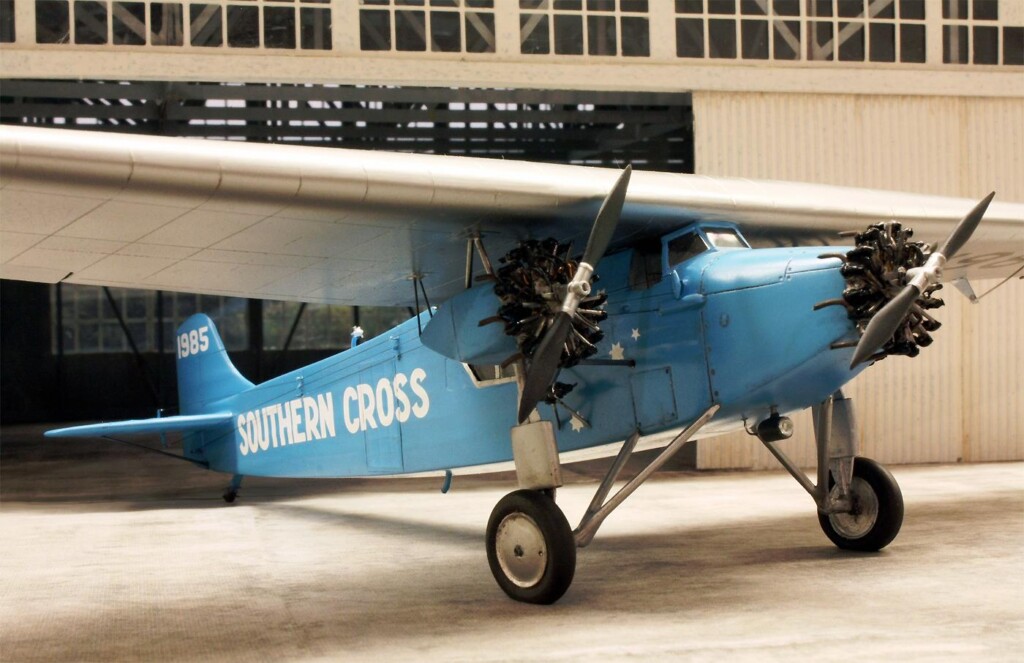
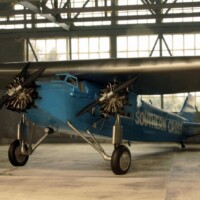
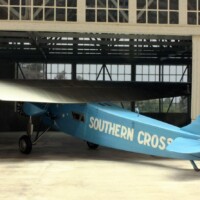
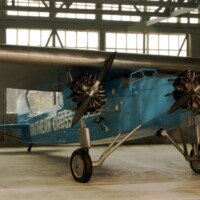
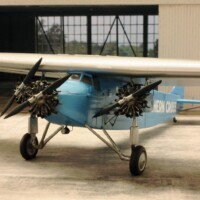
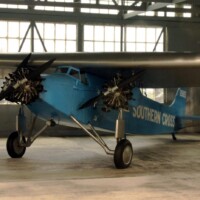

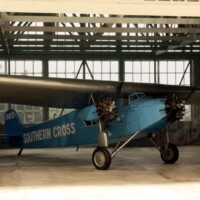
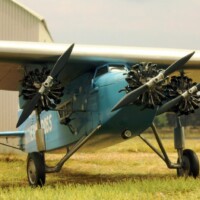
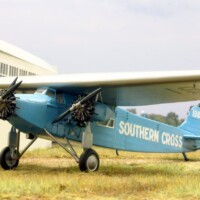
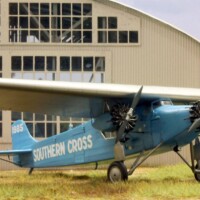
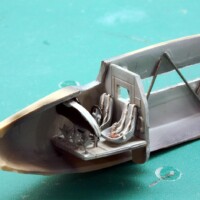
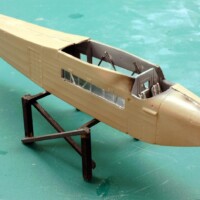
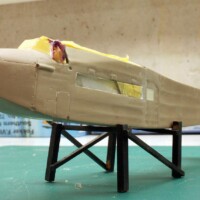
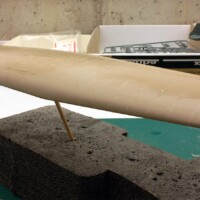
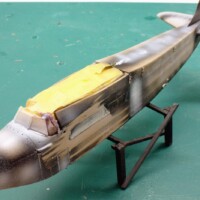
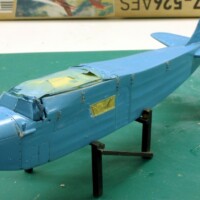
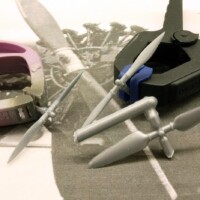

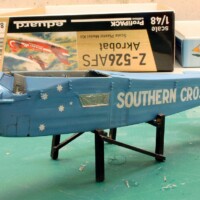
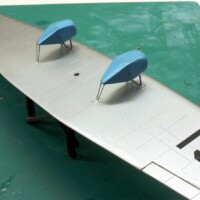

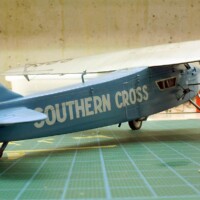
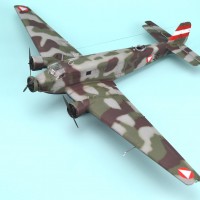
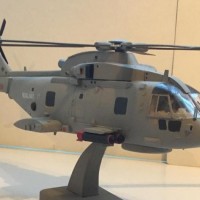
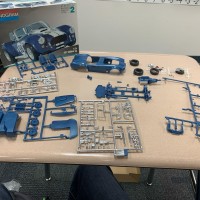
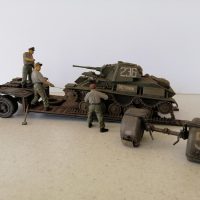
Excellent result! I've had good experiences with the larger Valom kits but this is one I passed on. You really did superbly to get such a good model and excellent research.
Thank you indeed!
What a fabulous build and wonderful story.
Also like the scenery shown in you pictures. Looks almost like the real thing, at least like a bigger scale than 1/72!
I really appreciate that, thank you for your words!
Excellent build and great story, Roland!
Well done!
Thank you Spiros!
Superior work on this kit Roland.
Thank you!
A marathon build with a successful conclusion.
Thank you for the appreciation!
Beautiful! One hell of an aero foil.
Indeed! 🙂
Thank you!
Stupendous work, Roland @rosachsenhofer! 👏 That is just beautiful in every respect, my friend! 🤩
Thank you Gary!
What a wonderful build of such an iconic aircraft, Roland @rosachsenhofer
Great article as well, thanks for sharing.
Having seen a real F.VIIa, single engine variant, at Aviodrome museum, in 2021 made me respect this aircraft even more.
1 attached image. Click to enlarge.
Thank you for the words and inspiration! I would also love to build one!
Another excellent project from R. Sachsenhofer Flugzeugbau gmbh! Your "extra effort" really paid off.
What really killed the F.VII was the March 1931 crash of Transcontinental and Western Air Flight 599 - an Atlantic (Fokker) F.VII flying from Chicago to LosLos Angeles, carrying Notre Dame head football coach Knute Rockne to take part in the movie The Spirit of Notre Dame. The plane crashed west of Bazaar, Kansas, killing Rockne and the other seven on board; the cause of the crash was attributed to failure of the wooden wing, bringing back all the stories of Fokker shoddiness of production. Atlantic Aviation was sold to the North American Aviation holding company, and became the heart of North American Aviation in 1934. There has never been another wooden airliner licensed in the United States since.
It's amazing and a pleasure to hear the stories you can tell. R. Sachsenhofer Flugzeugbau gmbh would like to thank you for this and your kind words!
What a spectacular build! I can appreciate all the extra work you put into this Valom kit, as I built one years ago.
Nice work on those 2-bladed props, interesting history, and great photography!
I didn't even attempt to build mine as the Southern Cross because of all the problems with the kit you mentioned. Instead, it was built as a Spanish Civil War machine.
BTW, the full scale replica of the Southern Cross recently made it's first flight on December 5 at Shellharbour Airport after a long repair job following a landing accident in 2002 after one of the compression legs failed on takeoff leaving the starboard main wheel dangling, causing major damage to the one piece wooden wing. (See Issue 127, Vol. 7, No. 4 issue of Classic Wings)
1 attached image. Click to enlarge.
Chas, thank you for your words of appreciation for the props and model. The picture makes me dream of another Fokker F. VII, thank you!
Amazing work on an atypical model.
Thank you Dan!
That's one great looking build, Roland!
Gary, thank you for these words!
That is a beautiful build of an amazing aircraft. @rosachsenhofer
John, I appreciate your words, thank you!
Nicely done Roland, well researched and detailed.
Thank you Allen!
Amazing rendition of the "Southern Cross" well done Roland.
Thank you for your words!
Great build!